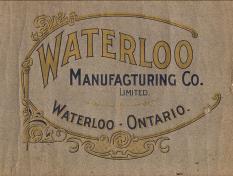





|
Waterloo Mfg of Ontario, Canada |
|
Although Waterloo was not the first distributor of Heider and Rock Island in Canada, it is without a doubt the most significant and valuable partner RIPC had. After RIPC parted ways with Gilson Mfg of Guelph, Ontario (who had marketed the Heider B and C for the Heider company early on), it still needed a Canadian distributor. According to Rick Mannen, Gilson began production of their own tractors in 1918, which likely means 1917 was the last of Gilson’s Heider sales. McMahon Machine Co in Lethbridge, Alberta placed a major order through Rock Islands northern office in Feb 1918 making it likely by then Gilson was out of the picture. Indeed, according to Mannen, Waterloo Mfg had already entered the picture. Waterloo was already well known for its steam power and thresher line; dating back to 1850 when Jacob Bricker began building implements, Waterloo already had substantial history. With experience building well respected steam engines and separators, waterloo had made an early attempt in 1911 at their own design, but sales fell flat. With WW1 in full swing, the demand for a light farm tractor was too great to ignore, and like other companies of the day, Waterloo went looking for a tractor. In Jan 1918, W. Umbach, Western Manager for the Waterloo Company paid a visit to Rock Island. When he left, he had a fresh agreement to make Waterloo the Canadian distributor of the Heider line and the Rock Island tractor plow lines. In July 1918, Waterloo entered the Heider in the Third Light Tractor Plowing Demonstration at Brandon, Manitoba. They presented three 9-16 model D Heiders, one on a 20x36 Waterloo Champion threshing machine and another on a No.9 2 bottom plow. Two 12-20 Model C’s also made an appearance, one on a 24x36 Champion thresher and the other on a 24x42 thresher. One of the C’s also spent time on a 3-bottom plow. According to Mannen, two Rock Island representatives also were at the demonstration, and they had brought a series of movies that were shown in the town theatre. Of substantial interest at the even proved to be the power lift mechanism Rock Island had recently brought to market, which one of the D’s was equipped with. Thus began a pairing that would last until Rock Islands close in 1937. Although Waterloo sold other tractor lines during the time it was partnered with RIPC, RIPC considered Waterloo to be a very important customer. It is interesting to note that Waterloo seemed to be a driving force in Rock Islands product line. Three Heider variants exist that all the company literature (or even information in general for two of them) all came from Waterloo Catalogs. All three of these were a push towards a larger tractor with the first mention of the Heider C 15-27 being called a 12-24 C “Old Reliable”, the Heider DU 18-30 and the Heider E 18-35 with its high/low friction drive. As RIPC entered the late 20’s, it became necessary to revamp its aging tractor line. Waterloo again marketed the new Rock Island line with enthusiasm. Enough that even as Rock Island was spiraling into oblivion in 1930, they still released to the Canadian market a model F variant called the a “Canadian Special”. Although this is supposition, it appears Waterloo was interested in these larger variants to round out packages with its larger separators. Certainly all four models were pushing the upper limits of Rock Islands horsepower. The Heider E 18-35 especially appears to have been an excellent mid sized machine for custom threshing with its 6 mph top speed and mid sized horse power. While not a replacement for large horsepower tractors it would have been well served going between smaller farms. It also appears, that while Waterloo was also marketing other tractor brands, advertising for the Heider was more focused on belt work than tillage work. A few Rock Island F’s have been found painted in an all red color scheme that according to Mark Paskevich (owner of a 1928 F his grandfather bought that was painted in the red scheme) was found on tractors sold through Waterloo. This scheme has been mistakenly reported as being connected with the Canadian Special, but it now appears that was in no way the case. The circumstances surrounding the red paint scheme still remain unknown as so far I have no corroborating evidence in literature or advertising. The two tractors I have confirmed with this scheme are Mark’s 1928 F and Ben Garnett’s 1927 or 28 F. Color advertising I have seen from Waterloo during this time period shows the standard gray and red, and very early F and G models were painted Heider Green. Both owners indicate that this was the original color scheme and in Mark’s case the history of the tractor is well known. He did indicate however that the engine had been overhauled, and under the red paint on the engine block was Rock Island Gray, but that was the only place this paint over had occurred. *Rick Mannen is a regular contributor to Antique Power and avid collector of GS&M and information on Canadian Tractors. His articles and assistance made this article possible.
|
|
Above: Waterloo Heider Catalog courtesy Reynolds-Alberta (Click to open)
|
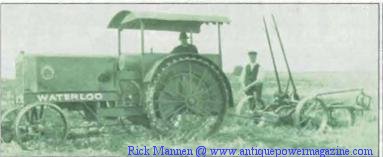
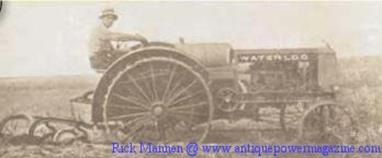
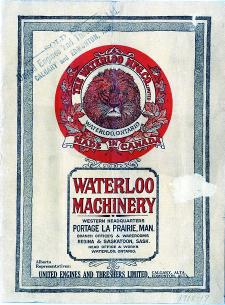
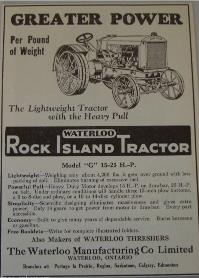
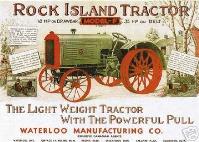
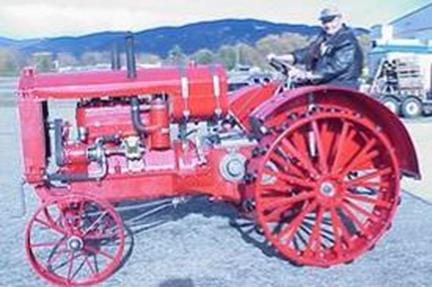
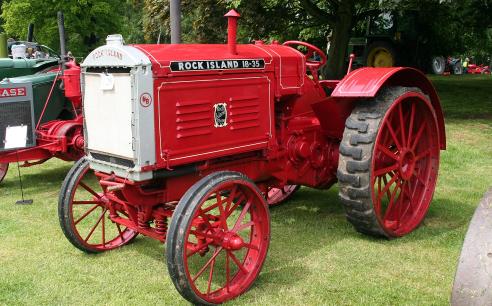
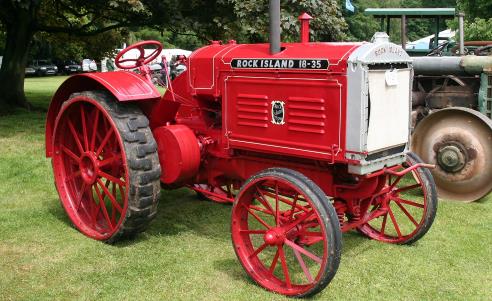
|
Below: Ben Garnett’s 1927 F was featured in UK’s Tractor & Farming Heritage Magazine March 2005. According to the article it is repainted in its original color scheme. |

|
Copy write 2011, 2012, 2013 not for republication or sale without express written consent. All images are the property of their respective owners and are not to be reused without their express permission. |
|
Below: Mark Paskevich’s 1928 F also painted in Red. |
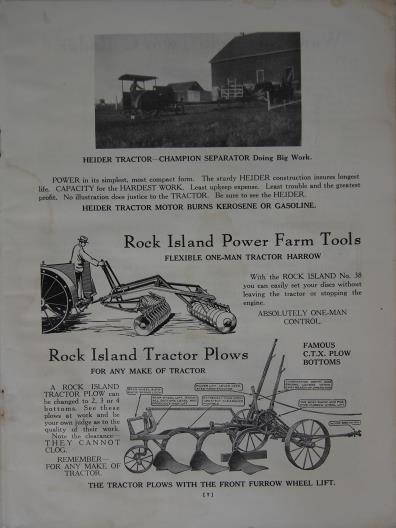
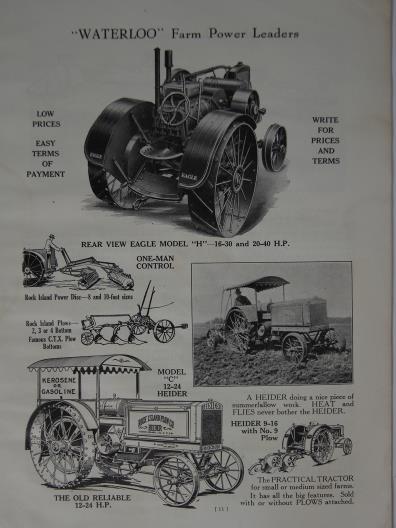
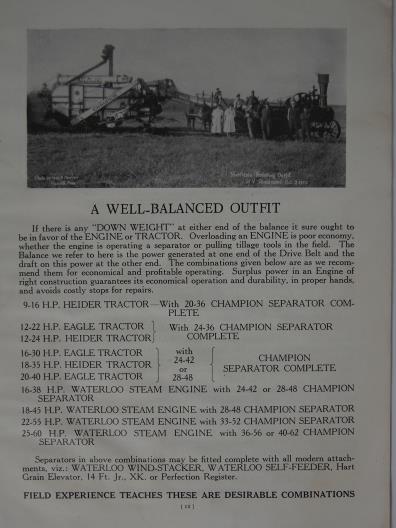
|
Below: These pages are from a very rare late 1923 early 1924 Waterloo Catalog, note the heider E and 12-24 refernces. |
